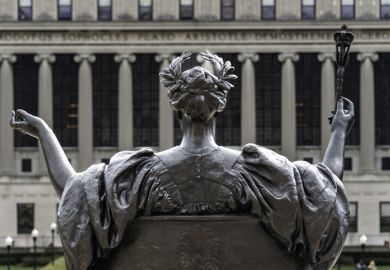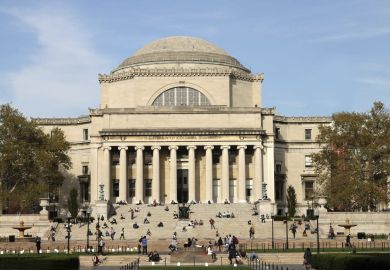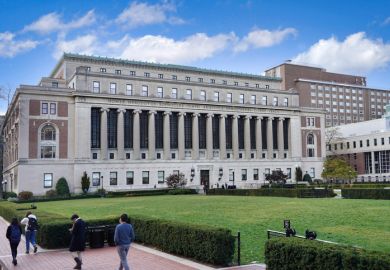The silly season doesn’t deserve its label. It was never true that nothing important happens during the dog days of high summer, and it’s not the lack of news that leads journalists to speculate about the sex lives of minor celebrities or lure minor UK Independence Party members into making observations about foreigners, immigrants and women.
Silliness certainly exists: witness David Cameron boxing himself into a corner with the egregious ultra-nationalist Viktor Orbán as his only ally.
And minor sillinesses are plentiful: among them earnest discussions of why football makes so little headway in the United States even when the national team does well; they invariably end with the observation that the action in football is continuous and offers less room for commercial breaks than American football. Still, the centenary of the assassination of Archduke Franz Ferdinand and his wife Sophie reminds us sharply enough that we can never quite relax, lean back and assume that nothing dreadful will happen for a few weeks.
The world is not silly but hard to fathom. Something on parents’ minds as they prepare to see their children off to university, but decidedly puzzling, is the level of student debt after graduation.
The crucial issue is how much of a burden loan repayments actually are…the income to debt ratio hasn’t altered in two decades
Every few weeks, The New York Times carries a story about a young person whose life has been blighted by debts of more than $100,000 (£58,000). A British reader finds it all too plausible. The “headline” costs of tuition, board and lodging are enormous; and unlike the case in the UK, student loan repayments in the US are not generally limited to a fixed proportion of income and are like mortgages or credit card loans in adding unpaid interest to the outstanding capital.
Reforms are in the works, but they will do little to help borrowers who have large outstanding loans. Opponents of the English student loan system have always – with some reason – pointed to the problems faced by graduates in the US who have large loans. But the question of how many graduates have real problems, and who they are, is not easy to answer.
Oddly, there are two diametrically opposed views, both of the size of the problem and its seriousness. Earlier in the spring, the Pew Research Center produced what looked like a very alarming report. In 2004, about 20 per cent of Americans under 30 who were supposed to be repaying their loans were “delinquent”, in the sense of being more than 90 days in arrears. In 2012, the figure was 35 per cent. The figure across all age groups rose from 20 per cent to a shade over 30 per cent. Worse, only two in five borrowers were making any progress in reducing the balance outstanding.As to how much they owed, the average in 2004 was about $15,000. In 2012, it was about $25,000. And student loans were the exception to the wider picture; since the debt crisis of 2008, Americans have reduced their outstanding debts on credit cards and other consumer debt. Anecdotal evidence suggested that indebted students and their more than $1 trillion of debt was a drag on the economy, inhibiting students from taking out mortgages and inhibiting lenders from giving them loans.
But a closer look challenges this grim picture. It isn’t so much that the figures found by the Pew Research Center are wrong, more that they need unpicking. The crucial issue is how much of a burden loan repayments actually are, and the answer seems to be that the income to debt ratio hasn’t altered in two decades. Another is how many people have really large loans; apparently, 93 per cent owe less than $50,000, and 60 per cent owe less than $10,000. Within the 7 per cent who owe more than $50,000 there are some who owe upwards of $200,000, but the overall picture is that most people who graduated with a decent degree have secured employment – the “premium” for successfully completing higher education is some 60 per cent over what one can expect from a high school education alone – and have no problem paying off their loans.
So, all is well then? To which the answer is absolutely not. The killer is failing to graduate. Given that the graduation rate in America is not much better than 55 per cent within six years, it means that a great many students are taking on debt and not getting a degree at the end of the process. Since the received view is that graduating with a degree provides some 16 times the uplift of merely attending for a couple of years, the implications are grimly obvious.
Nor are non-completers evenly distributed throughout the population: the worse off you are, the more likely you are to drop out. Poorer students are also more likely to enrol in a for-profit institution with few resources to keep them making progress or in an overstretched community college or other public institution that has also been forced to raise its tuition fees in the face of tax-averse state and local government meanness.
The “true” cost of tuition – the average that people have to pay after discounts and grants – has hardly risen in the past decade or so at private colleges, and the “headline” price is misleading unless you come from a really well-off family; it’s quite otherwise with public colleges where tuition fees have soared because states have starved them of tax-based income.
The issue, as always, is the knock-on effect of inequality generally, exacerbated in the US by the coincidence of race-based and employment inequalities. It is sometimes hard to resist the thought that the most Christian aspect of American life is its attachment to the principle that to him that hath it shall be given but from him that hath not it shall be taken away…
Register to continue
Why register?
- Registration is free and only takes a moment
- Once registered, you can read 3 articles a month
- Sign up for our newsletter
Subscribe
Or subscribe for unlimited access to:
- Unlimited access to news, views, insights & reviews
- Digital editions
- Digital access to THE’s university and college rankings analysis
Already registered or a current subscriber? Login





